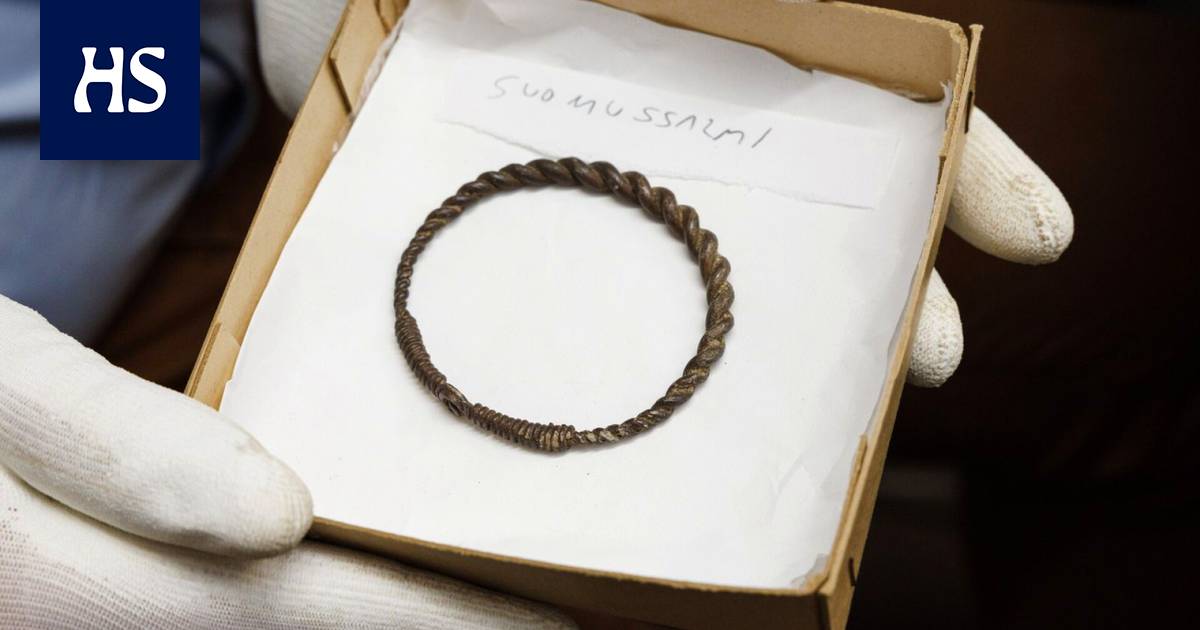However, not all archaeological discoveries are reported to the authorities in accordance with the law.
Museum Agency receives more and more reports of archaeological metal finds, and more and more Finns seem to look for metals in the terrain in their free time.
Amanuensis of the Museum Office Sami Raninen estimates that the popularity of metal detecting is due, among other things, to the Menneisyyden metästäjät series on Yle’s TV1 channel in 2017.
“There are clearly more reports of discoveries. In the end, it’s difficult to assess whether it’s due to the increase in the number of enthusiasts or the easier reporting of found objects,” says Raninen.
Chairman of the Finnish Metallinetsijät ry By Lasse Nyman according to the number of enthusiasts increased significantly from 2010 onwards.
“The peak years were between 2017 and 2019, when you could talk about a small boom. After that, I would say that the number of enthusiasts has clearly leveled off,” says Nyman.
According to Nyman, estimating the number of enthusiasts is quite difficult. There are a number of passionate enthusiasts who devote considerable amounts of time to the hobby, and also so-called “Sunday seekers”.
Museum Agency in 2019 opened Ilppar, a notification service for reporting archaeological citizen observations, where everyone can easily report artefact finds. The agency says that it has a friendly attitude towards searchers as long as the legislation is in place.
“The starting point is that as long as the searchers comply with the antiquities law and otherwise act smartly, we see enthusiasts as cooperative entities. They could be described as citizen science contributors who increase knowledge and understanding of Finland’s archaeological cultural heritage,” says Raninen.
According to the Antiquities Act, found objects that are more than a hundred years old must be reported to the National Museum Office.
The Finnish Museum Agency can redeem the find, in which case the finder can apply for a finder’s reward or donate the find. The processing of redemptions is complicated by the processing time, which is about three years.
“Fortunately, the processing time for redemptions is getting shorter. Last spring, the archaeological collections received additional resources for this work, so the processing delay can be overcome,” Raninen points out.
Everyone however, the findings are not reported to the authorities.
“It does happen quite a lot. I have sometimes thought about it pessimistically myself, that even half of all Iron Age discoveries are left unreported. If this much is really left unannounced, it will destroy this shared history of all of us. However, no very reliable and accurate estimates can be made from this,” Raninen reflects.
There is a notion floating around among some enthusiasts that after the announcement of the discovery, the National Museum Office hides the object in an archive, where it will never be seen again. However, Raninen rejects the validity of the claim.
“It is one hundred percent nonsense. The finds go to professionally maintained collections, where they will be preserved for the future. They are being studied and are available for exhibition activities.”
Kanta-Hämeen Searchers of the Past Reijo Hyvönen is a well-known industry enthusiast from, among others, the Yle TV series. Hyvönen has worked in metal detecting circles for a long time and assures that the Antiquities Act is respected in his circles.
“There are metal detecting forums on the Internet, where some “enthusiasts” are of the opinion that discoveries should not be reported (to the authorities). Years ago, an enthusiast had found a rare thousand-year-old coin, which he tried to auction in Denmark. Fortunately, the Museum Agency noticed this,” says Hyvänen.
According to the metal detectorist, his own cooperation with the authorities has not gone smoothly.
“Last fall, I basically got the test excavation team to study the late Viking age sword found in Janakkala,” says Hyvönen in his own view.
Important archaeological discoveries have been made in Janakkala before. The most famous of them is the so-called Janakkala swordsman discovered in the fall of 2013. Behind the discovery was the Kanta-Häme search team represented by Hyvönen.
Metal detecting is an exciting way to learn about history as a hobby. However, starting the hobby is relatively expensive, as you can spend several hundred, even thousands of euros to get a high-quality metal detector.
You can’t dig or even wave a detector anywhere, you always need the landowner’s permission.
You should familiarize yourself with the area well in advance, as digging in areas protected by the National Museum Agency is strictly prohibited.
If you find an object on the ground that you suspect is an ancient object, you must recover it, note down the exact location and notify the National Museum Office. The item must not be cleaned. The risk is that during the cleaning, important information will be accidentally destroyed – for example, a textile remnant that was in the object.
After the object is found, the place of discovery must be left alone. The discovery site may contain a residence, a grave, or another solid ancient relic protected by the Antiquities Act, which, according to official instructions, should not be excavated further.
#Archeology #Finns #hunter #lost #metal #treasure









